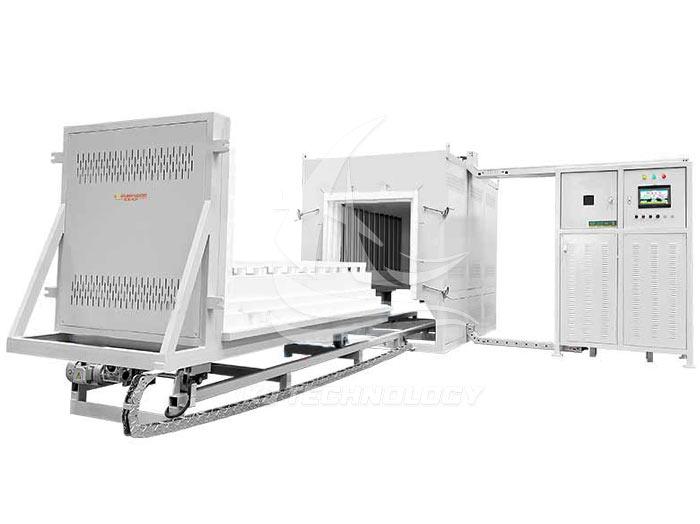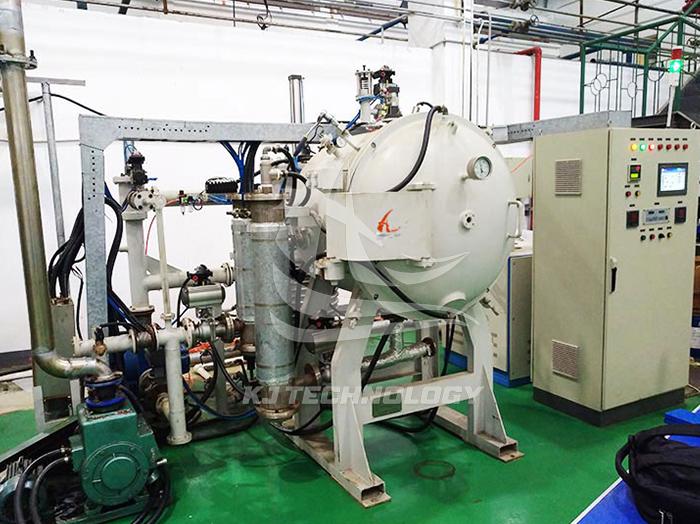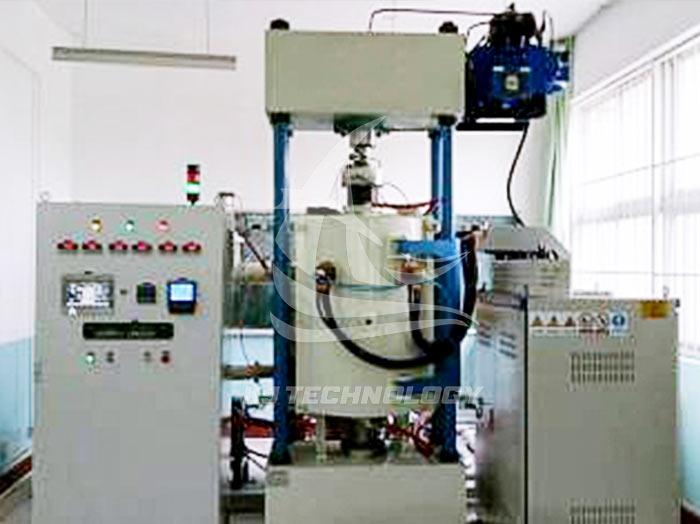Common faults and troubleshooting methods of small vacuum furnaces used in experiments
 10-21-2025 Author: KJ technology
10-21-2025 Author: KJ technology
Small vacuum furnaces used in experiments may encounter various malfunctions during use. The following will explain from four aspects: abnormal temperature, abnormal vacuum degree, mechanical structure failure, and other common problems, and provide specific troubleshooting methods:
1. Abnormal temperature
Phenomenon: High temperature alarm or display temperature not reaching the set value.
Possible reasons and troubleshooting methods:
Abnormal temperature controller parameters:
Check: Compare with other normal temperature controller parameters and calibrate all parameters.
Solution: Reset the temperature controller parameters to ensure that the PID regulation function is normal.
Solid state relay malfunction:
Inspection: After a power outage, measure the resistance between the two output points of the solid-state relay using a multimeter in the resistance range. Normally, the resistance should be several megaohms or more, but if it is broken down, there is almost no resistance.
Solution: Replace the solid-state relay with a new one of the same model.
Thermocouple malfunction:
Inspection: When powering on, gently shake the thermocouple probe and observe whether the temperature controller displays a large jumping amplitude. If the jump is large, it indicates poor contact of the thermocouple probe.
Solution: Replace the thermocouple probe with a new one. If replacing the internal thermocouple, it is also necessary to ensure the vacuum sealing performance.
Heating tube malfunction:
Inspection: After powering on, start heating and use a test pen to test the wires connected to the heating tube (white high-temperature wire on the solid-state output terminal) to see if there is electricity. If there is electricity, a clamp meter is also needed to measure whether the current is not significantly different from other working areas.
Solution: If the heating tube is not powered on, check the circuit one by one according to the circuit diagram to see if any components are burnt out.
2. Abnormal vacuum degree
Phenomenon: Vacuum cannot be drawn up or is too low.
Possible reasons and troubleshooting methods:
Abnormal vacuum gas source or compressed air pressure:
Inspection: Confirm whether the vacuum gas source is normal (above -95KPa) and whether the compressed air pressure is normal (normal operating range is 0.4-0.6MPa).
Solution: Adjust the vacuum gas source or compressed air pressure to the normal range.
Vacuum gauge malfunction:
Check: Refer to the vacuum gauge in normal use to see if the parameters are normal.
Solution: Replace or calibrate the vacuum gauge.
Poor sealing of furnace door:
Inspection: Check if the furnace door is tightly closed, if the sealing film at the door is damaged or deformed, and if there are any foreign objects on the door panel.
Solution: Replace damaged sealing film, clean foreign objects from the door panel, and ensure good sealing of the furnace door.
Leakage of pipeline or pneumatic valve:
Inspection: Check the positions of pipelines, pneumatic valves, thermocouple inlets, etc. in the corresponding work area. There are usually more air leaks at the inlet of thermocouples.
Solution: Apply AB glue again for sealing, or replace the leaking pneumatic valve.
3. Mechanical structural failure
Phenomenon: The furnace door cannot be tightly closed, there is abnormal noise from the fan, and the pneumatic valve cannot operate.
Possible reasons and troubleshooting methods:
The furnace door cannot be tightly closed:
Inspection: Check if the hinges of the door are loose, if the buckle is deformed, if the sealing strip at the door is damaged, and if the door panel is deformed.
Solution: Tighten the hinge screws, replace deformed fasteners or sealing strips, and repair deformed door panels.
The fan has abnormal noise:
Inspection: Check if there are any foreign objects inside the fan wheel and if the screws fixing the motor are loose.
Solution: Clean the foreign objects inside the fan wheel and tighten the screws of the motor.
Pneumatic valve cannot operate:
Inspection: Check whether the corresponding solenoid valve can work normally and whether the compressed air pressure meets the working requirements.
Solution: If the solenoid valve is normal and the compressed air pressure meets the standard, replace the pneumatic valve.
4. Other common questions
Vacuum pump malfunction:
Phenomenon: Decreased pumping efficiency.
Possible reasons: pump body wear, oil contamination, or component aging.
Solution: Clean the vacuum pump, replace with new vacuum pump oil or pump body parts.
Heating element damage:
Phenomenon: Insufficient heating.
Possible reasons: broken heating wire, oxidation, or damaged insulation layer.
Solution: Measure the resistance value with a multimeter, and replace the heating element if it deviates from the standard value.
Insulation screen failure:
Phenomenon: Severe heat loss.
Possible cause: Partial damage to the carbon fiber insulation screen.
Solution: Replace the damaged heat shield.








